Samir welcomed us with the sweetest mint tea I ever tasted, well garnished with plumpy leaves, sat down with us, and began his story about the great Moroccan city of Fez.
The Riad he manages is in the old Medina, Fez el Bali, the best preserved old city in the Arab world and world’s largest pedestrian area.
His heart-warming words about Fez made us even more curious about the city, and we would have jumped at the chance of visiting it then if it wasn’t already dark.
In the light of day, while driving out of the city and towards Chefchaouen, Fez Medina looked like an old citadel, with yellow stone walls and cobbled streets, but of a very different kind than those in Europe.
The streets were chaos in motion, but I somehow managed to survive it, with all the pedestrians jumping in front of my car, and exited the city safely.
Upon our return, the city felt different, more animated and a bit unkind.
Driving through Fez slums was an awakening experience
A three-year-old girl showed me the stop sign while she and her mother literally jumped in front of my car at a roundabout. I was puzzled but smiled because she looked so funny being all authoritative like that.
Peeled facades of old apartment buildings towered by tens of satellite dishes and laundry left to dry outside each window make up most of the scenery.
Then there’s a huge street market selling fruits and vegetables, all sprinkled with pedestrians jumping back and forth in front of the cars, mopeds, donkeys, and mules.
I pulled over for this street scene, but a couple of men with piercing eyes having tea at an improvised terrace nearby started staring at us a bit menacing, so we were on our way in less than 5 minutes.
Back to our oasis – Riad Fes Baraka
On our way to the Riad, we passed by Fez el Jedid’s tens of street lamps sparkling in the afterglow, and we were once again in our cheerful holiday mood.
Samir welcomed us with a traditional kefta tajine, the best spicy olives I ever tasted, a Moroccan salad and a flavored beetroot salad garnished with crispy almonds.
Next morning, we were set to explore Fez in a day, so Samir provided us with a local guide that would help us find our way through the labyrinth of strikingly similar streets of Fez el Bali.
This was one of the very few occasions when we employed a local guide and liked the experience for the insights it provided. Otherwise, I would have loved walking aimlessly and getting lost in the old Medina.
Fez Medina – the best preserved old city in the Arab world
Walking up and down in Fez el Bali seemed daunting at first because of this huge maze of very narrow streets bordered by yellow walls.
A few seven-year-olds girls passed us by cheerfully, and so we found out that children get a long break from school just to have their lunch at home, with their family.
Fez, like all Moroccan cities, is all about traditions and family, even more so than the cities in the South.
People born in the Medina live their whole life without leaving the old city, and most are unaware of what’s going on beyond the old walls (the new Moroccan cities look European, from corporate outfits to traffic jams).
Children raised in the Medina continue their family tradition, mostly taking care of the ground floor shop or workshop, and continue living with their parents even after having their own family.
This is also how most Riads were built – incrementally, so they could accommodate a larger family (upper floor was usually built more than a decade later).
As we approached the souks, the scenery changed, the sounds amplified, and the colors of Fez multiplied until reaching the rainbow-like allure of every other Moroccan city.
We stopped in one of the food souks to taste some sweets and then wandered off in the heart of the Medina.
Fez Tannery
Fez Tannery was our first stop, and the experience provided us with even more nuggets of insight into the well-preserved Moroccan Traditions.
Hard labor under a torrid sun and in an awful smell is what impresses most about this place.
The colorful dyeing pits are the main attractions of Fez Medina, but the experience of it all makes you reconsider your leather buying. So we left the shop with a view towards the Fez Tanneries without buying anything, but with a sense of guilt.
250 families work in Chaouwara / Chouara Tannery, continuing a tradition that goes back a few centuries.
The process of creating leather goods is pretty much the same, the pits are very similar to the first ones, so the whole experience feels like an 11th century time capsule.
There’s a 5 steps process to leather making in Morocco’s Tanneries:
- preparing the animal skins by removing the hair in a pit with a mix of substances,
- refining the skins in the awful smelling mixture made of pigeon poo, limestone, cow urine, animal fats, fish oils, sulfuric acid, and salts,
- removing the remaining fat and hair,
- softening and skiving the leather,
- dyeing the leather using natural pigments such as turmeric for yellow, henna for orange, poppies for red, and indigo for blue and then placing it in the sun to dry.
The leather-making process in photos
On our way out, I faced the most heart-breaking image yet, one that will surely stick with me forever – the angel of death.
I stopped in front of him not for the photos, but because of the shock of seeing this poor mule. I remember thinking he can’t smell anything by now from carrying all those dead animal skins on his back day in and day out. It was an even more touching experience than visiting the tanneries.
Fez el Bali holds many wonders within its walls
Wandering off in the textiles dyeing quarter of the Fez Medina was rewarded with some more insight on how much manual labor is behind the authentic Moroccan objects.
A stop to a textiles shop introduced us rather abruptly to Moroccans’ commercial nature and we got a crash course on how to negotiate and still lose. One hour later, depleted of all our energy, we managed to cut the price to 30% of the initial offer. Still, we manage to lose 100€/$122 to two indigo blue scarfs and two pillowcases.
Before entering yet another souk, we passed by a narrow quarter of wood workshops, then attended a vintage items auction in the middle of the market, and stopped to admire the art of making zellij (Moroccan tiles) in a ceramics shop.
- Wood Workshop
- Wood Workshop
- Wood Workshop
- Textiles Dyeing Market
- Textiles Dyeing Shop
- Textiles Dyeing Shop
- Textiles Dyeing Market
- Textiles Shop
- Moroccan Lamps
Al Attarine Madrasa and Al Quaraouiyine University
The oldest continually operating University in the World is set in the heart of the Old Medina, close to Al Attarine Madrasa, the Coranic school.
We visited Al Attarine Madrasa, which was more crowded than expected, and strikingly similar to Ben Youssef Madrasa in Marrakech – the mosaics, the colors, the wooden decorations of the windows, and the tiny interiors for students looked the same. The only exception is the lack of a fountain in the middle of the patio.
We then took a peek through the open gates of Al Quaraouiyine University, which is also a mosque, so it can’t be visited.
I find it amazing that this is the oldest University in the world, a UNESCO Heritage Site, but can’t be visited, confirming once again that Moroccans are very keen on safeguarding traditions, even at the sweet cost of commerce.
Nejjarine Art & Wood Museum
Following the tangled streets of yet another souk, we arrived at the beautiful Nejjarine Art & Wood Museum.
Funny enough, this architectural gem used to be an inn, so the beautiful columns inside were used to tie down the horses, mules, and donkeys. The big scales at the ground floor were used to weight travelers’ merchandise since their trip to Fez was often of a commercial nature.
The tiny rooms at the first and second floor, where merchants used to sleep, now display a small collection of wood objects and wood carving tools.
Heading up to the terrace of Nejjarine Museum will offer a 360 degrees panorama over the monochrome Fez Medina. The tall yellow walls towered by satellite dishes and “decorated” with laundry strings don’t impress much, even with the green color patches offered by the mountains rising behind. Still, it’s always interesting to see a city from above.
We finished our tour of Fez here, still curious about what other treasures this former imperial city had to offer. But we had a long drive ahead, one that would lead us to Casablanca and Rabat.
Where to stay in Fez, Morocco
Riad Fes Baraka was one of the most beautiful accommodation experiences I ever had. The myriad of colors and textures in our room and in the Riad’s inner patio are unlike anything I’ve ever seen.
The few palms around their gorgeous pool attract birds each morning, making the Moroccan breakfast experience even more rewarding.
It’s not the cheapest accommodation option (100€/$122), but I think it’s worth it. I should probably mention that all Riads with beautiful patios and a pool are more expensive, so expect to pay 25% more for one like Riad Fes Baraka.
Travel tips for visiting Fez, Morocco
Getting to and around Fez
Fez is a great city to begin your road trip through Morocco. We landed in Fez in the evening and got our rental car at the airport. It’s worth mentioning that I was surprised by the beautiful design of the airport, the cleanliness, and the new furnishings.
We spent two nights in Fez but stayed in the city for just one day because we chose to drive to Chefchaouen during our first day. I would have loved to stay in Fez for two days and explore the old Medina by myself, but we were on a stricter schedule than usual.
If you’re only spending a day in Fez, booking a local guide is a good idea – streets in Fez el Bali look very similar, and even if you don’t get lost, you’re going to lose some time wandering around until you reach the points of interest. In addition, booking a guide will give you interesting insights into the history of Fez.
Choose your accommodation in the old Fez Medina and book a Riad for a great experience. Hotels are fine I guess, but if you want a more interesting experience, Riads do provide it. Sure, they’re not as cheap as hotels, but the experience of such an oasis will be worth it.
Fez is more traditional than Marrakech, so wearing decent clothes goes a long way, especially for women.
Fez used to be a great commercial center, so expect lots of people to offer you their help or merchandise. It’s safe to avoid too many interactions with merchants, and better buy leather good further away from the Fez Tannery for a much better price.
Driving through Fez is pure madness!
That’s because all pedestrians jump in front of your car, expecting you to let them pass all the time, no matter if it’s your legal right to pass.
I know it sounds strange, but this is how things are, even on the road from the airport to the city.
Therefore, driving carefully means really slowing down, watching both sides of the roads constantly, and slowing down, even more, when you see a pedestrian nearby.
Best time to visit Fez, Morocco: October – April, when temperatures are acceptable (300C / 860F).
Where to eat in Fez and Morocco – Read about my Food Tour in Morocco >
My Fez Travel Guide ends here and I hope you’ll find it useful when visiting this Moroccan city.
Road Trip in Morocco: Fez, Rabat, Marrakech, Casablanca, Chefchaouen, Rif Mountains, Atlas Mountains | October 2017 | All Photos © Ana Matei > Instagram @MateiAna
Read Next:
Chefchaouen, The Blue City of Morocco You Need To Visit >

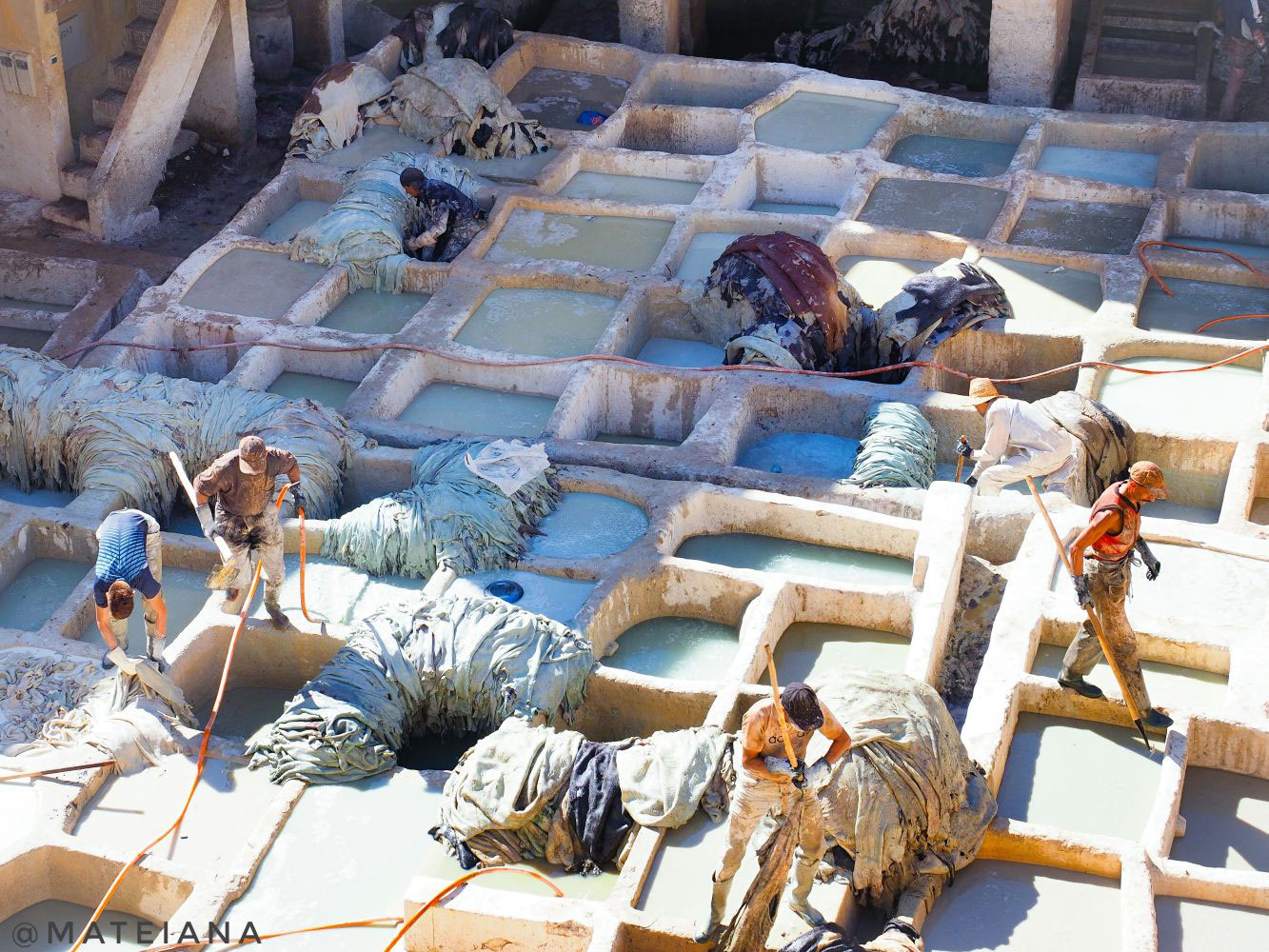
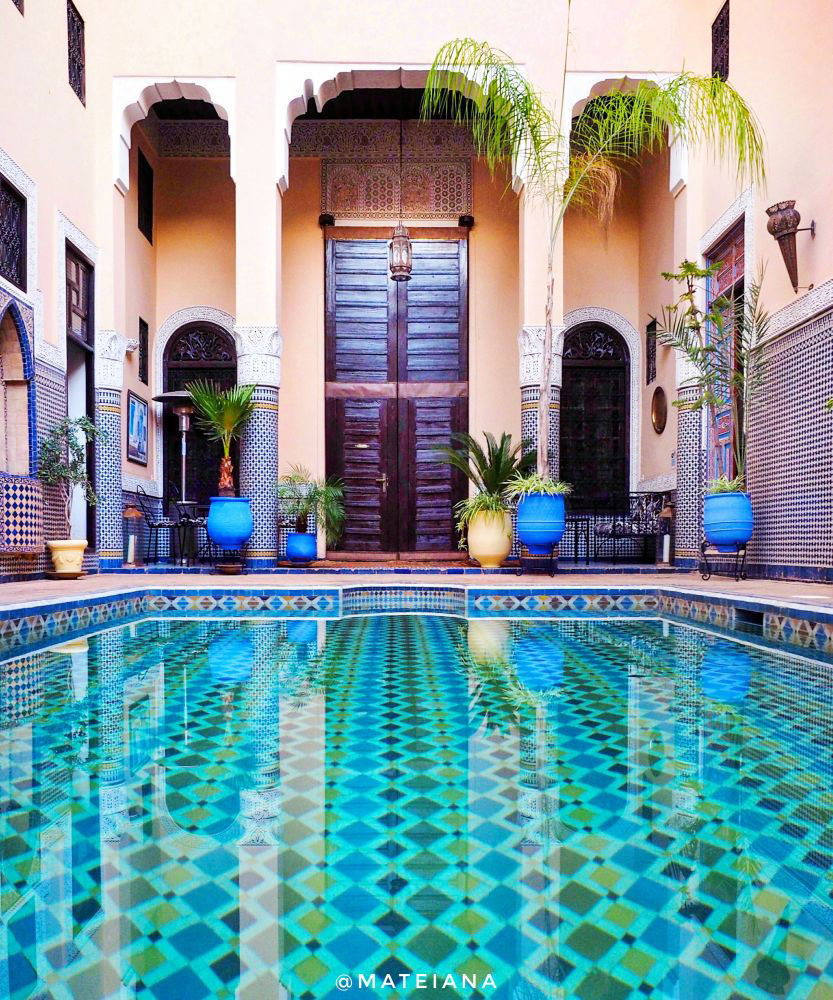

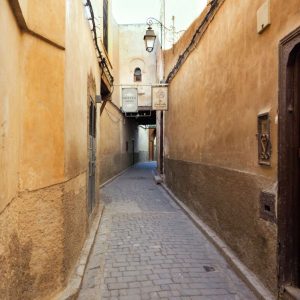




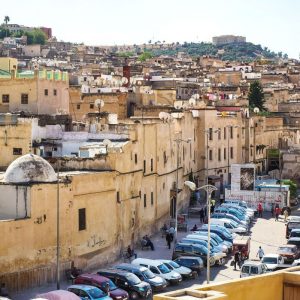






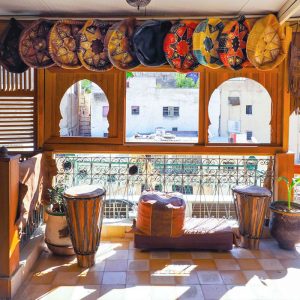







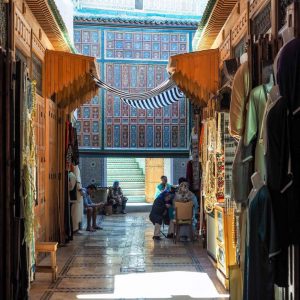
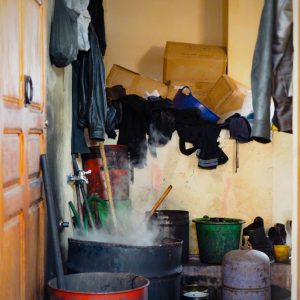



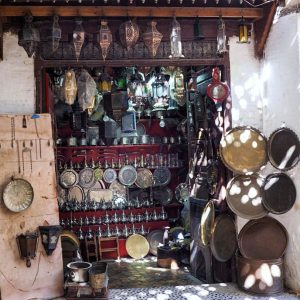





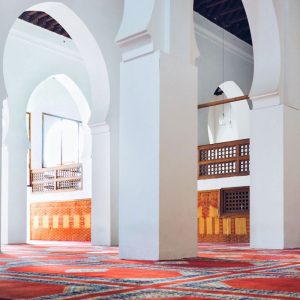

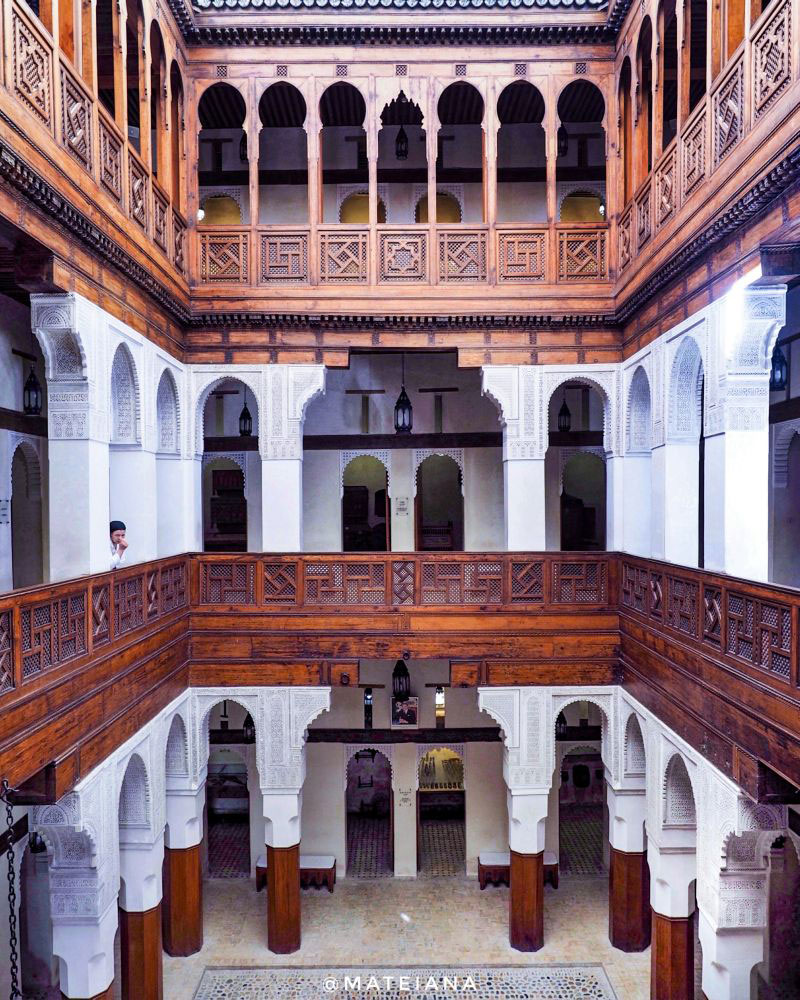
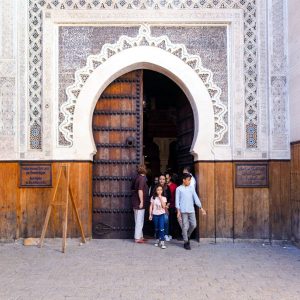






No Comments